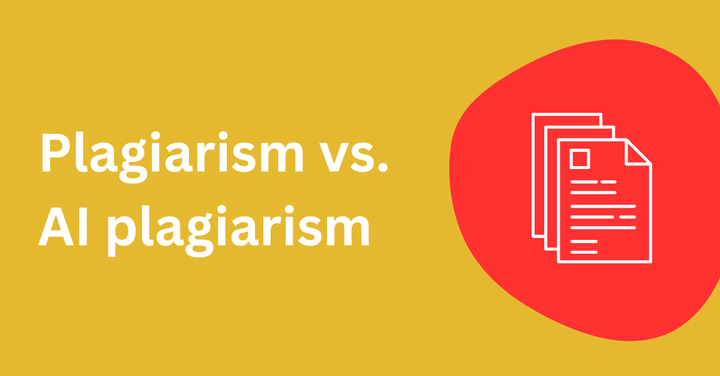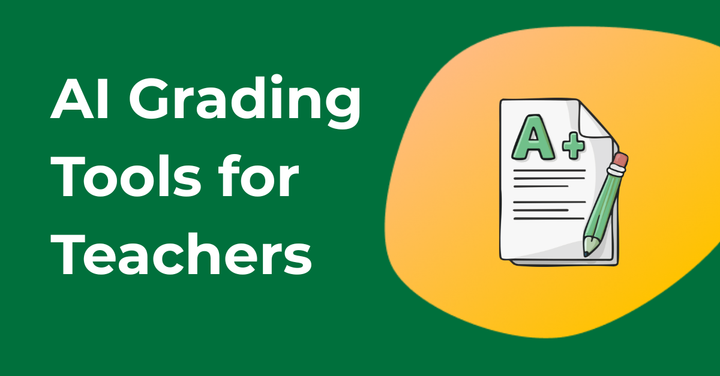Navigating AI in the classroom

What is generative AI?
In one sentence - generative AI refers to a type of artificial intelligence technology that can create new content, such as images, text, or music, without direct human input.
Pros/cons of using AI
Pros: In an educational context, generative AI can be utilized to develop personalized learning materials, generate interactive exercises, or even simulate tutoring sessions. Its potential benefits are vast, offering educators the ability to adapt content to individual student needs, enhance engagement through interactive experiences, and streamline administrative tasks. In our March 2024 survey of over 100 educators, 54.7%, said they would use AI to “enhance interactive learning.” 46.1% of the respondents said they would use it for “personalizing student learning experiences.”
To read the full report, download GPTZero’s guide, AI unpacked: A teacher’s companion to discussing AI in class.
Cons: However, the integration of AI in the classroom also presents challenges. Educators must navigate ethical considerations such as data privacy and algorithmic bias, ensure that AI tools complement rather than replace human instruction, and address concerns regarding the reliability and accuracy of generated content. Nonetheless, with careful implementation and ongoing evaluation, generative AI holds promise as a valuable tool for enhancing teaching and learning experiences in diverse educational settings.
What to do if AI is detected in your class?
If you detect AI writing in a student’s work, it’s important to default to the stance of educating and raising awareness of AI’s benefits and hallucinations. You are here to teach, both your curriculum but also how students will move forward through the world. So in that light, start the conversation from a place of good faith. Your approach should acknowledge the potential of AI as a tool, while underscoring academic integrity and the development of personal voice and critical thinking.
Some students may not know about AI’s occasional inaccuracies benefits and hallucinations (the AI's tendency to make up false information and present it as fact). You can inform them that misinformation is inherent to AI-generated text. Use that fact as a springboard for a deeper understanding of AI’s technical limitations in academic work.
Circle the conversation back to how students can use their own voice to enhance what AI has generated. Come up with some tangible next steps, and even walk through the AI writing tool together if you have the opportunity. Offer to work with the student on proper AI use during their time in your class. At the end of the day, your aim is to create an environment where students feel supported in their learning journey.
Sample script of a conversation with a student about AI writing:
Hi [Name],
I’d like to talk about your recent assignment submission.
It's important for me to say at the outset that this is a conversation from a place of understanding and support, not accusation.
In reviewing your work, a tool we use indicated that parts of the assignment might not have been entirely your own creation.
My primary goal here is to support your learning and development. I’d like to understand the journey you're on, the pressures you might be facing, and how I can best assist you in navigating them.
Could you share with me a bit about your process in creating this assignment?
GPTZero over alternatives
When choosing a tool to use to detect AI, ensure it covers your full suite of needs including:
Addressing Biases
A Stanford university study showed that many AI detectors exhibited high false positive rates when analyzing text by ESL students. This biased false positive rate was absolutely not acceptable, and not fair to ESL students.
After learning of this problem, GPTZero immediately began sourcing text by second-language speakers and refining our model to eliminate this bias. We were the first and only AI identifier that directly addressed this problem.
When we re-ran the numbers and analyzed our progress, we successfully mitigated detection bias, and achieved a target 1% false positive rate for ESL writing.
More Interpretability
As part of our commitment to interpretability, we were the first in the industry to launch sentence by sentence AI highlighting. We’re continuing to be at the forefront in interpretability research through our latest feature release, deep analysis.
Deep Analysis view for an AI identification result
As you can see above, the Deep Analysis view allows users to examine how specific sentences contributed to the overall AI probability. This is just one of many initiatives to significantly improve our understanding and experiences with AI identification.
The most important step towards responsibly adopting AI identification continues to be having human conversations — especially on when and where it should be applied. As an educator, you have a wave of new tools at your disposal for incorporating AI in your classroom and detecting it in writing. So where do you begin?
Start with GPTZero.


